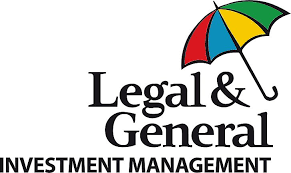Water scarcity is an urgent, global issue requiring a considered and cooperative response. Here, in part two of our blog series, we offer up steps policymakers can take to address it.
In our first post on water scarcity, we outlined the perilous state of the world’s water supply, underscored by the heatwaves experienced this summer. In addition to the environmental toll, the damage to agriculture and freight – to name just two sectors – is economically disruptive, adding to the cost-of-living crisis.[1]
Options for policymakers
While the considerable cost of inaction on water scarcity is easy to understand, dealing with it is complex. Water issues are interconnected and cross-sectoral, spilling across climate, energy, health, food, education, urban development, and national security, making it difficult for policymakers to implement and coordinate changes.
While we cannot cover all the intricacies here, we believe it is important that policymakers 1) have a strong water resource management plan, and 2) create an enabling environment that encourages greater public and private investment in water-related infrastructure. To achieve this, policymakers should develop a robust and long-term water security strategy.
In our view, the strategy would ensure policymakers take a balanced, systems-based framework, to water management. It would move policymakers away from single-issue, siloed, interventions that has often resulted in unforeseen externalities in other sectors, and help policymakers manage both the productive potential of water and its destructive capacity.
Specifically, policymakers could use this framework to manage potential water excesses (e.g. floods), water quality (e.g. pollution) and enhance resilience of freshwater systems, alongside ensuring adequate water provision. It could be used to balance the broader environmental, social, or geopolitical risks, of building a dam or reservoir as an example.
By understanding and balancing the social, economic, and environmental trade-offs of interventions to mitigate water-related risks, we believe policymakers could move countries into more water-secure situations. We believe the following four levers could play a critical role in doing so.
1) Using market-based instruments
More accurate pricing – or incentives – that incorporate the scarcity value of water, or create regional water markets by allocating tradable rights, could drive more efficient use, promote conservation efforts, and help cover future investment and maintenance costs.
2) Improving information
Narrowing the existing transparency, information, monitoring, and enforcement gaps with consistent, comparable, and reliable data (across both public and private sector) would likely drive better decision-making.
We believe this would encourage national regulators to take action on lack of compliance; for example, by fixing leakages that the World Bank estimates globally lose 32 billion cubic metres of water each year[2]. Another avenue would be integration into sustainable finance regulation, namely disclosure frameworks such as the IFRS International Sustainable Standard Board, the UK Sustainable Disclosure Regime, and the EU Sustainable Finance Disclosure Regulation.
3) Encouraging investment
Specific areas that would benefit from investment, in our view, include water storage and groundwater recharging, improving wastewater treatment and harnessing technologies that make existing water go further; for example, desalination plants and efficient agricultural irrigation.[3]
Additionally, Infrastructure and flood mapping could be upgraded and reservoir capacity could be added. In emerging markets, blended public-private finance vehicles could support these types of investments.
4) Strengthening and broadening regulation
Finally, we see strengthening, or in some cases initiating, water-related regulation as an important step. Areas include defining acceptable pollution levels in rivers and enforcing them against utilities or agricultural production.
The scale and potential impacts of water scarcity – societal, environmental, and economic – are far too large and urgent to ignore. We believe the adoption of water-management strategies would be a critical step in addressing this issue. But this would likely only be effective if accompanied by thoughtful planning, coordination and cooperation between geographical regions and industrial sectors, combined with careful consideration of environmental factors.
[1] The UN’s report ‘Drought in Numbers’ contains additional information on water scarcity and its impacts.
[2] World Bank. 2016. Accessed 01/09/2022. (https://blogs.worldbank.org/water/what-non-revenue-water-how-can-we-reduce-it-better-water-service#:~:text=In%20developing%20countries%2C%20roughly%2045,which%20occurs%20in%20developing%20countries.)
[3] For more information on this topic, see our blog, ‘How technology could plug the gaps in our water systems’.

